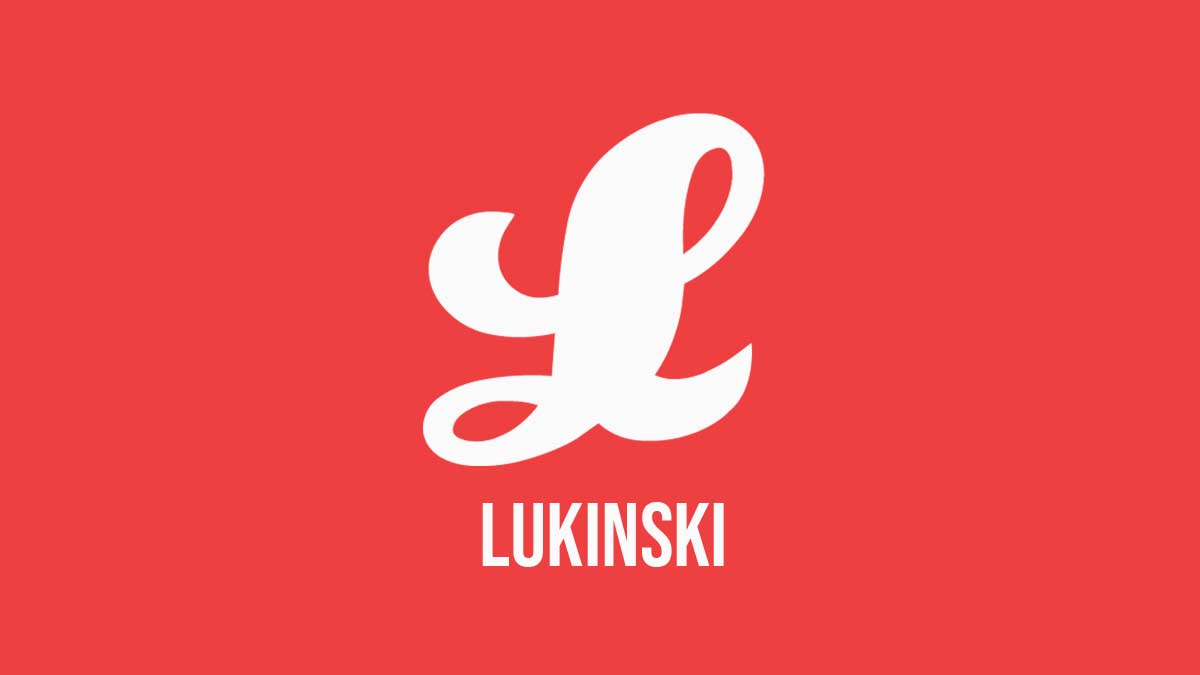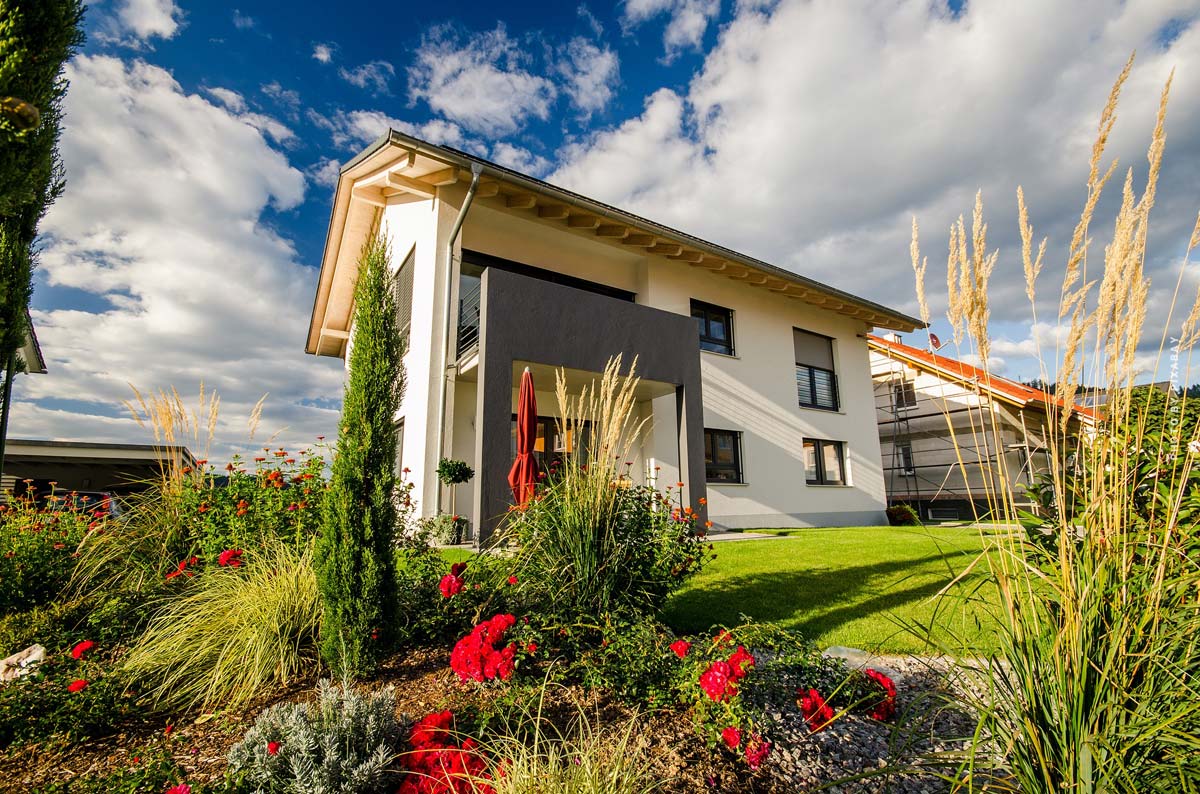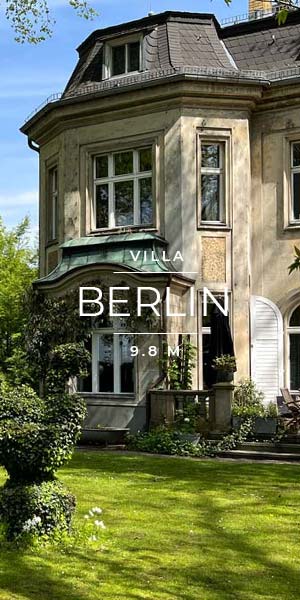What you need to consider when building a solid house: Advantages & disadvantages when buying a house and building a new one
Solid house advantages & disadvantages – The solid house is the classic among the homes and enjoys great popularity among builders, as well as buyers. Built stone on stone, solid houses last a century and are characterized by a very high durability. However, the solid construction method goes hand in hand with a long construction period and is therefore often not a solution for those who decide at short notice to build a new house on a plot of land they have just acquired.
The alternative is an already built house that you can buy in solid construction and modernize and rebuild according to your own taste. Lukinski is happy to support and advise you if you are faced with the decision to buy a house and are considering whether it should be a solid house or another construction method.
Certainly, your personal requirements for the property also play an important role in the selection. You can build a solid house according to your own taste, so that you can be creative and adapt the building form, the size, the roof and the room layout to your needs. In this article we would like to look at the solid house from all sides and show you for whom the solid construction method brings advantages and who should opt for the classic in stone on stone construction.
Why a solid house brings advantages
The robust construction is a clear advantage of the solid house. Because they are made of stone, these houses stand out as particularly robust and weatherproof. Stones are almost weather-resistant, so that you can still buy solid houses from the 19th century and move into them after some renovation work. For builders, the focus is on the advantages of free planning. If you choose a solid house, you can plan all elements and details according to your own taste and have them implemented by an architect. Furthermore, solid houses are expandable, which means that you can easily add on and extend when buying an older house.
With a prefabricated house this option is not given, because the basic form is fixed and built from parts manufactured at the manufacturer. The indoor climate and temperature control are another advantage of solid construction. In the warm season, the rooms in the solid house remain cool, in winter the heat is stored in the walls. Equally interesting is the sound insulation. Solid houses have a very good sound insulation and are not as bright as it is the case with prefabricated houses or wooden houses. The solid construction reduces consequential damage if, for example, water damage occurs due to a burst pipe. While the risk of wall and floor damage is enormous with prefabricated construction, solid masonry can be quickly drained without causing major damage to the masonry. In terms of value retention, the solid house is clearly in the lead. Even a century after it was built, it still has a market value that banks will accept and base financing on. If you want to sell your house at some point, you should choose a solid house in favour of the market value and protect yourself from financial losses in this way.
Solid house – are there any disadvantages?
The solid house itself has no disadvantages. However, you have to expect a much longer construction period when building and assume that construction will be interrupted during bad weather or the onset of winter. The costs for solid houses are higher than for alternative construction methods, as you need different trades and have to coordinate the individual construction phases. Basically, you need an architect or structural engineer to plan the house, control the construction phases and regularly check the quality of the construction. This aspect generates costs in addition to the more expensive building materials, which also have to be paid. It is usually not possible to set a specific completion date. Since various trades are involved on your construction site or with the renovation of an existing property in solid construction, the duration of the necessary measures is primarily based on the interlocking construction phases and the reliability of each individual trade.
When buying an already built solid house, you have to expect a higher asking price than with prefabricated houses. In return, you acquire a property that retains its value and can be sold at any time for a good market value. Even though prefabricated solid houses are already available today, the classic solid house is the first choice for people who want to build their home stone on stone. Solid houses are more price-intensive than other types of construction, but this is not a real disadvantage, but rather a side effect that is aligned with the higher effort, the higher material costs and the longer construction time and life span of the property.
Solid house vs. prefabricated house: differences and advantages
Buying or building a solid house?
To build or to buy? Anyone who has decided to buy a solid house is automatically faced with this question and is looking for answers that fit their requirements and the planned time until moving in. If you purchase a plot of land and build the solid house yourself, you have to reckon with a longer period of time and assume that several months or even a year can pass until you move in. The real time period depends among other things on the weather and your start of construction. If you start in the summer, you have to reckon with a construction stop of several months in the winter, which postpones the move-in date. An alternative to construction is the purchase of already built solid houses.
As savvy real estate agents, we at Lukinski – Your Home Sale recommend you take a look at the variety of options you’ll find in our massive home portfolio, for example. As a buyer, you save a long construction period and still have the possibility to individualize your solid house and, for example, remodel the interior. This means that even with an older solid house you are flexible and can enlarge rooms, remove non-load-bearing walls or integrate more light into the house through new and larger windows. Solid houses are very suitable for conversions, as the removal of individual bricks is possible and you can therefore have the property converted at any time.
Another advantage of the already built property in solid construction comes from the price. Existing properties are offered at a fixed price determined by the market value and give you the security that the costs are manageable. Since the market value includes the condition of the property, you will pay less for a solid construction house in need of renovation or refurbishment than for a property that is ready for immediate occupancy.
The financing of solid houses – how is the market value calculated?
A solid house puts you in a good negotiating position with the bank. Since the value retention is higher and longer-term, banks usually finance solid houses more straightforwardly. The basis for a construction or real estate loan is the market value of the property. In the case of existing solid houses, this is calculated from the actual material value of the property, as well as from the information relevant to the environment, infrastructure and demand. A solid house in a sought-after location and in good condition allows you to take out a higher loan amount, since the property counts as collateral for the bank and can be financed, for example, through a land charge. A market value assessment is the basis of any financing and should therefore be carried out by an expert.
At Lukinski, as part of our real estate brokerage services, we offer property appraisals and are happy to make financing recommendations that fit the property and your financial background. For the market value, the year of construction, the substance and the age, as well as the equipment of the property are important. Furthermore, the land value, the general market value per square meter in the region, as well as the comparative price of massive houses in the immediate vicinity are included in the calculation. A good infrastructure also has a positive effect on the market value and increases the value of the property. Financing for solid houses are usually realized by annuity loan and secured in this way with a land charge. If you are interested in a solid house, we at Lukinski will determine the market value for you and create the basis for the financing.








